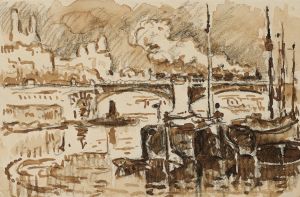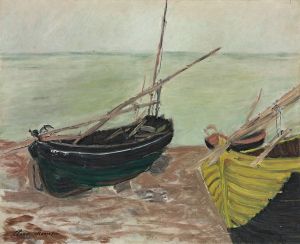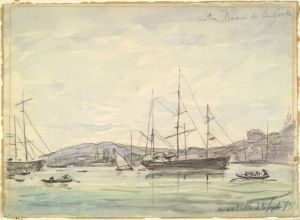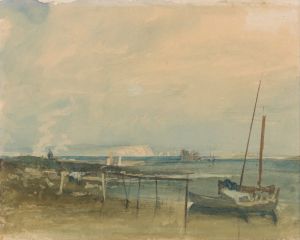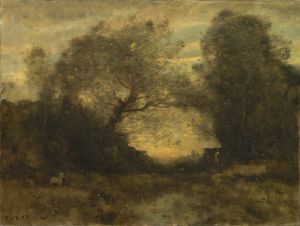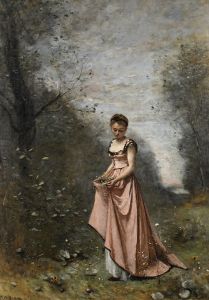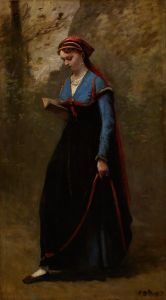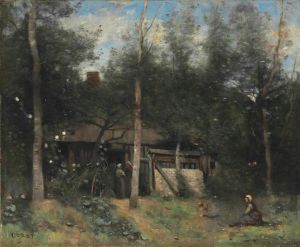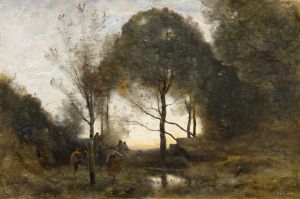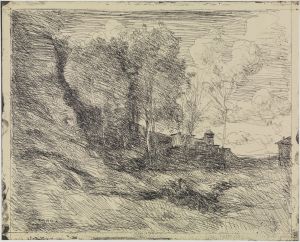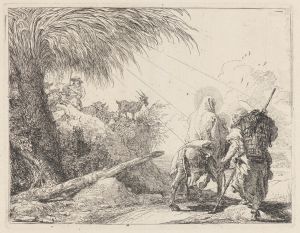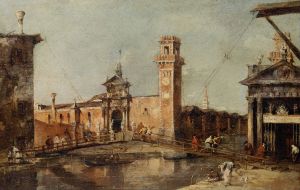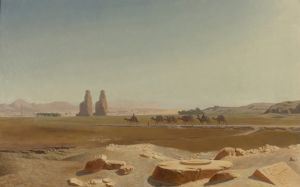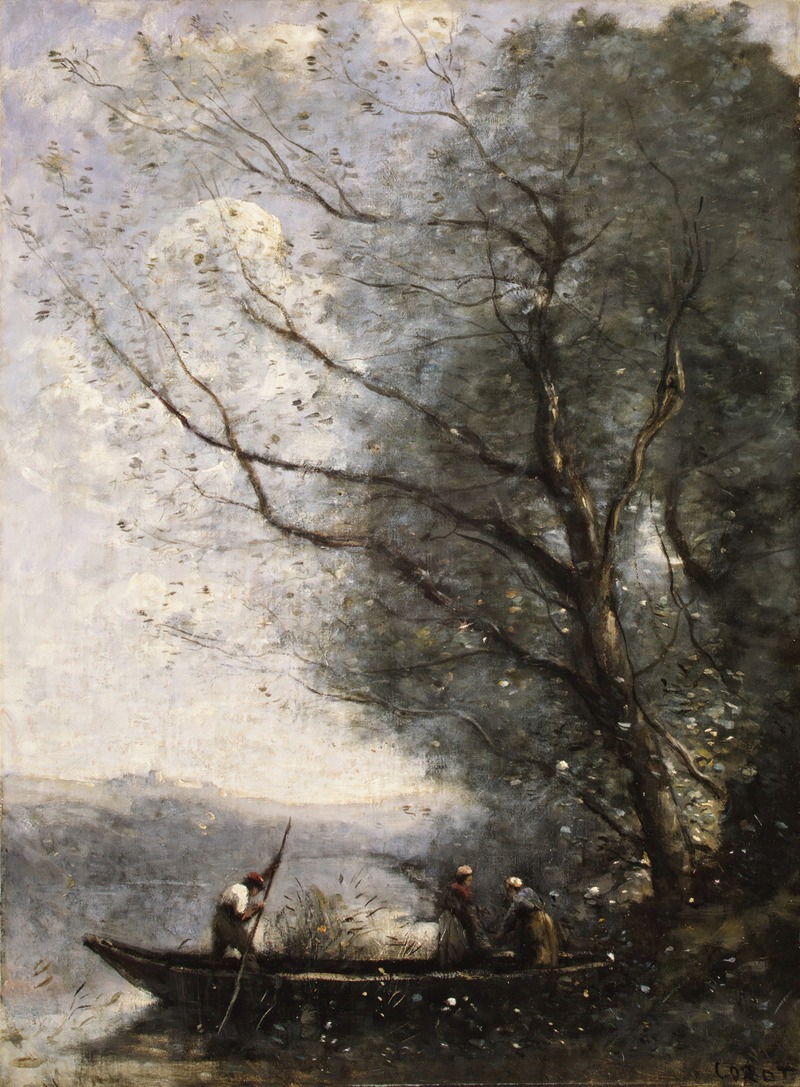
The Ferryman
A hand-painted replica of Jean-Baptiste-Camille Corot’s masterpiece The Ferryman, meticulously crafted by professional artists to capture the true essence of the original. Each piece is created with museum-quality canvas and rare mineral pigments, carefully painted by experienced artists with delicate brushstrokes and rich, layered colors to perfectly recreate the texture of the original artwork. Unlike machine-printed reproductions, this hand-painted version brings the painting to life, infused with the artist’s emotions and skill in every stroke. Whether for personal collection or home decoration, it instantly elevates the artistic atmosphere of any space.
Jean-Baptiste-Camille Corot was a pivotal figure in landscape painting, and his work "The Ferryman" exemplifies his mastery in capturing the serene beauty of nature. Corot, a French artist, was active during the 19th century and is often associated with the Barbizon School, a movement that emphasized naturalism and paved the way for Impressionism. His works are celebrated for their atmospheric quality and the delicate interplay of light and shadow.
"The Ferryman" is one of Corot's many landscapes that reflect his deep appreciation for the natural world. While specific details about the painting's creation, such as the exact date and location, are not widely documented, it is consistent with Corot's style during the mid to late 19th century. This period was marked by his transition from the more structured compositions of his early career to the softer, more atmospheric works that characterize his later years.
In "The Ferryman," Corot employs a muted color palette, a hallmark of his mature style, which enhances the tranquil mood of the scene. The painting likely depicts a rural setting, with a ferryman navigating a small boat across a calm body of water. This subject matter is typical of Corot, who often chose to depict everyday scenes of rural life, capturing the simplicity and beauty of the countryside.
Corot's technique in "The Ferryman" demonstrates his skillful use of light to create depth and dimension. The soft, diffused light suggests either early morning or late afternoon, times of day that Corot frequently favored for their gentle illumination. The reflections on the water's surface are rendered with a delicate touch, showcasing Corot's ability to convey the ephemeral qualities of nature.
The composition of "The Ferryman" is balanced and harmonious, with the ferryman and his boat serving as focal points that draw the viewer's eye into the scene. The surrounding landscape, likely consisting of trees and perhaps distant hills, provides a serene backdrop that complements the central action. Corot's brushwork is both precise and fluid, allowing him to capture the essence of the scene without unnecessary detail.
Corot's influence on later artists, particularly the Impressionists, is well-documented. His approach to capturing light and atmosphere, as seen in "The Ferryman," was revolutionary for its time and inspired a new generation of painters to explore similar themes. Artists such as Claude Monet and Camille Pissarro admired Corot's work and were influenced by his ability to convey mood and emotion through landscape painting.
"The Ferryman" is a testament to Corot's enduring legacy as a master of landscape art. While the painting itself may not be as widely recognized as some of his other works, it embodies the qualities that make Corot's art timeless: a deep connection to nature, a subtle yet powerful use of light, and a composition that invites contemplation and reflection. Through paintings like "The Ferryman," Corot continues to be celebrated as a key figure in the transition from traditional landscape painting to the more modern approaches that followed.





